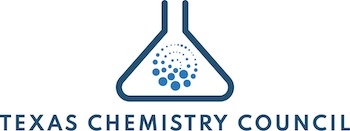Complete Story
01/30/2025
US ExxonMobil may build cracker, PE plant in Texas
ICIS | Al Greenwood | Jan. 24, 2025
US ExxonMobil may build cracker, PE plant in Texas
ExxonMobil may build an ethane cracker and polyethylene (PE) plant near Corpus Christi, Texas, the company said in an application for a tax break.
If ExxonMobil proceeds with the project, it would be built in Calhoun county, which is north of Corpus Christi, the application said.
Construction could start in 2025 and finish at the end of 2030. Production could start in 2031, the application said.
ExxonMobil is considering other locations for the possible project, including the Middle East, Asia and other sites in North America.
ExxonMobil did not disclose capacity figures. The total capital investment could be $8.6 billion.
In a statement, ExxonMobil said it was evaluating multiple locations around the world for a future chemical plant. It acknowledged the advantages of a project on the Gulf Coast, which it could integrate with its operations in the Permian basin.
“While this site has potential, we are very early in our evaluation process,” ExxonMobil said. “Filing for a tax abatement before a final decision is required by law and is part of our due diligence to gain greater clarity for our shareholders and the community.
“As we look to meet global demand for our products, we’ll continue to evaluate the market conditions before we make a decision,” the company said.
ExxonMobil is involved in another petrochemical project in nearby San Patricio county under the Gulf Coast Growth Ventures joint venture with SABIC. Operations started earlier in the decade, and that project produces ethylene, PE and ethylene glycols.
Chemical Safety Board aims to stay ‘productive and efficient’ under new administration
Safety+Health | Jan. 27, 2025
Chemical Safety Board Chair Steve Owens considers the independent agency among “the most productive and efficient” in government, even as it operates with two of its five seats vacant.
During a Jan. 23 public business meeting, Owens, alongside board members Sylvia Johnson and Catherine J.K. Sandoval, pledged to continue the agency’s work. However, plans for CSB under the second Donald Trump administration remain uncertain.
“We don’t really have any involvement in that,” Owens said about possible additions to the board. “That’s always a decision made by the White House, and the three of us were appointed during the previous administration. We’ll obviously wait and see if the current administration has any plans to appoint anybody to the board.”
CSB was a frequent target for elimination under the first Trump administration, and the president’s known plans for deregulation during his second term suggest additional board members are unlikely.
Although the two seats have remained open since Sandoval was sworn in on Feb. 2, 2023, CSB has steadily added to other areas of the agency. The results, it says, are improved response time to and management of incidents.
In fiscal year 2024, CSB reached a milestone of 1,000 safety recommendations aimed at protecting workers and communities while eliminating a long-standing investigation backlog.
On Jan. 14, the agency announced it will aim to boost transparency by regularly publishing summaries of serious chemical incidents reported to the agency under its program on incidental release reporting.
“As we move forward, the CSB’s work remains critical, and I’m energized by the possibilities ahead,” Johnson said during the meeting. “Progress isn’t accidental; it’s the result of diligent effort, collaboration and a steadfast commitment to doing better. Together, we’re creating a safer, more secure future for workers, communities and the environment.”

